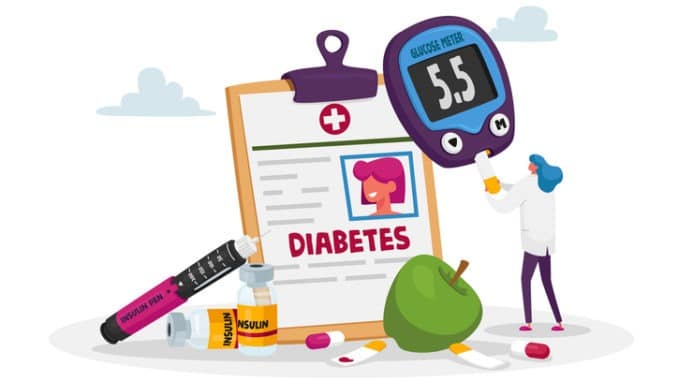
Progress may have slipped, but general practices are finding innovative ways to catch up. In Part 2 of this report, Emma Wilkinson reports on calls for more guidance on new drugs and more remote monitoring to support self-management
This is an edited version of an article that originally appeared on The BMJ
Link workers tackle inequalities
“We’re all resuming normal services now, and we are seeing more patients with diabetes and more patients with poor control than before,” Selvaseelan Selvarajah, a GP partner in east London, tells The BMJ. “We’ve seen a lot of HbA1c over 100 [mmol/mol], much more than we would have seen previously.” Those uncontrolled blood glucose readings are put in context when you consider that an ideal target in adults with diabetes is 48 mmol/mol.
It’s more complicated than simply doing the annual review on time, he explains. The Bromley by Bow Health Centre, his practice, has found the funding to hold extra clinics with healthcare assistants to make sure that blood tests, blood pressure checks and foot checks can be done before a telephone consultation with the GP.
The practice has invested in link workers who support people through social prescribing to try to tackle some inequalities in their population. “We have 30 000 patients over three practices in a densely-packed area,” he says. “There’s not much outdoor space; a lot of people work in frontline jobs or hospitality and it’s had a huge impact on them.”
These patients were suddenly having to work in stressful environments, at risk of catching COVID, or were suddenly out of work. Such circumstances don’t make it easy to keep active and motivated in looking after yourself, says Selvarajah. “The pandemic has had an impact on people not being able to exercise and be active, and people’s eating habits have changed – we’ve seen how all the [takeaway] delivery apps have done really well,” he tells The BMJ.
He adds that greater use of technology can help to manage demand. “We purchased 100 blood pressure machines to lend to patients,” he says, enabling the practice to keep monitoring when patients couldn’t access health services, or didn’t want to.
Remote consultations are here to stay
When the pandemic hit in March 2020 most doctors working in UK diabetes services were pulled into caring for patients with COVID. As with other specialties, much routine care stopped for the 12 weeks of the first wave, and the same thing happened as the alpha variant took hold in the second wave from January to March 2021. Kar estimates that around 60-70% of his team’s work became about looking after patients on COVID wards.
Urgent clinics continued to see patients face-to-face for hypoglycaemia or extreme hyperglycaemia, active foot disease, new diabetes in pregnancy or insulin initiation. Since then there’s been a large increase in virtual consultations. Most other routine work also shifted online, and remains there. “I’ve just finished a clinic and, of the 11 patients involved, three were face-to-face and everyone else was over the ‘phone,” says Kar. “The majority of patients have stayed virtual, and that’s because of the amount of monitoring technology that people have at hand now.”
NHS data also indicate that hospital admissions of younger patients with diabetes and foot complications have fallen, while admissions of middle aged and elderly patients have risen. This may be related to COVID, says Kar, and is something to keep an eye on.
Dexamethasone for COVID-19
“The use of dexamethasone for COVID has had a big knock-on impact,” says Kar, as specialist teams have had to manage virtual wards of patients treated for COVID with this steroid, and it can take weeks to get their diabetes back under control. In the first four months of the pandemic a third of COVID-related deaths (14,000) were in people with diabetes – but dexamethasone can cause substantial hyperglycaemia in people with diabetes.
Retinal screening was suspended during the first lockdown throughout the UK and, as services reopened, capacity was low because of distancing rules and the need to clean equipment and rooms between patient appointments. Public Health England already had plans to change screening to every two years in people at low risk after research showed that this was a safe interval—which Kar says has helped to take pressure off.
And what of new diagnoses of diabetes? In a study of GP records, researchers at Manchester University found a 30% drop in April 2020 when compared with historical trends. As the year progressed this recovered, but remained well below what would be expected, suggesting that from March to December 2020 some 60,000 diagnoses of type 2 diabetes were missed or delayed in the UK.
The team also found a fall in HbA1c testing – most notably in older people – raising concerns about long-term complications as poor control is missed. Part of the reason for this, says the charity Diabetes UK, may have been patients not seeking help because of a fear of contracting COVID-19 if they attended healthcare services, or not believing that their care was urgent enough.

Be the first to comment